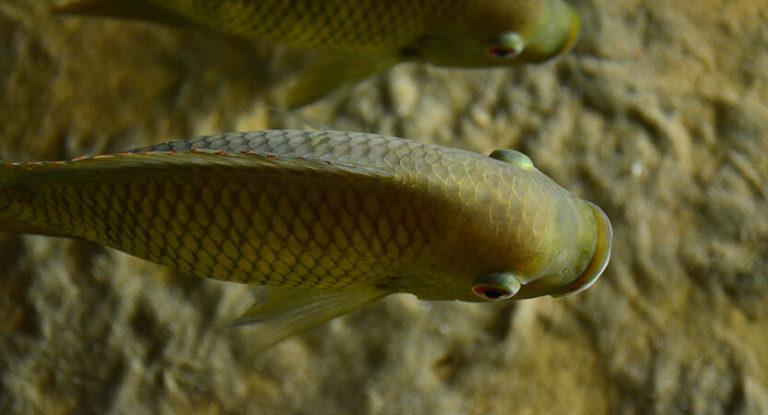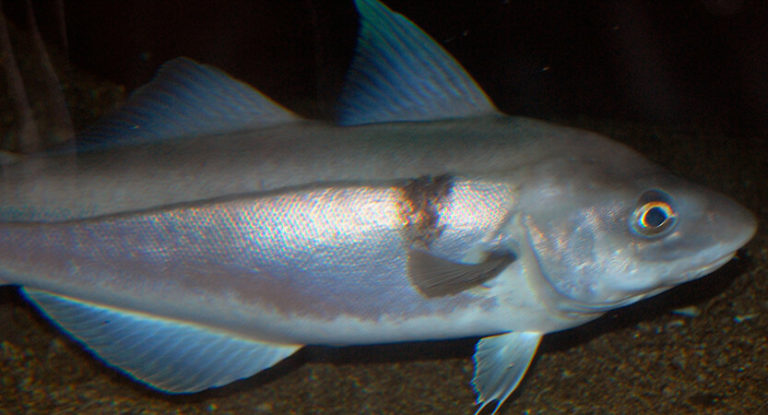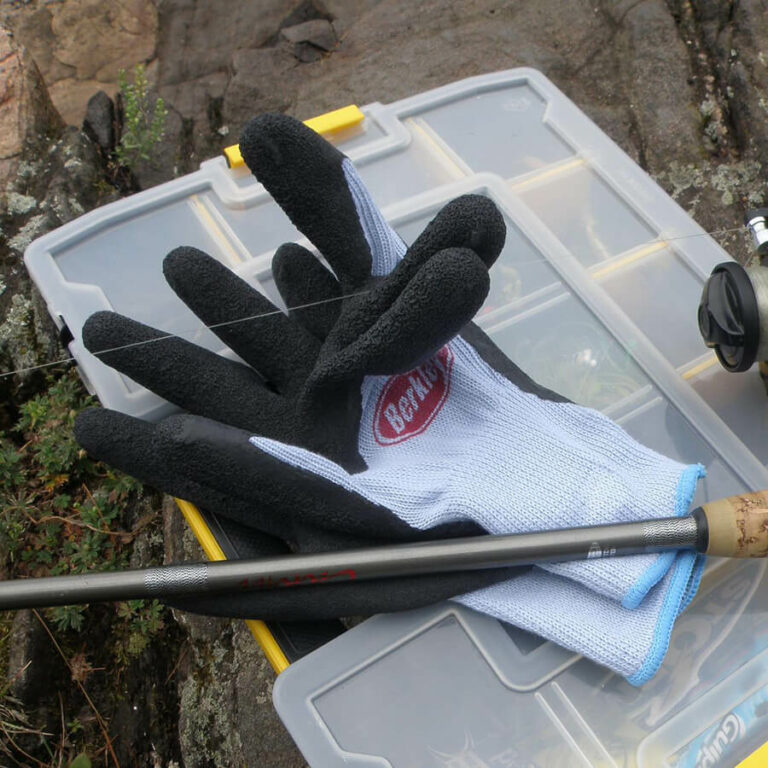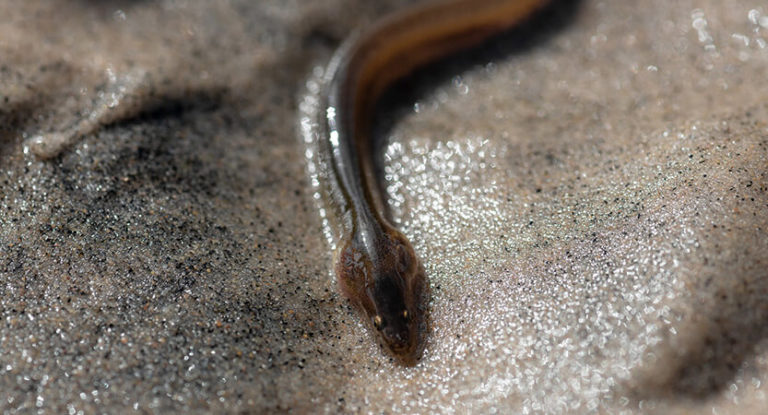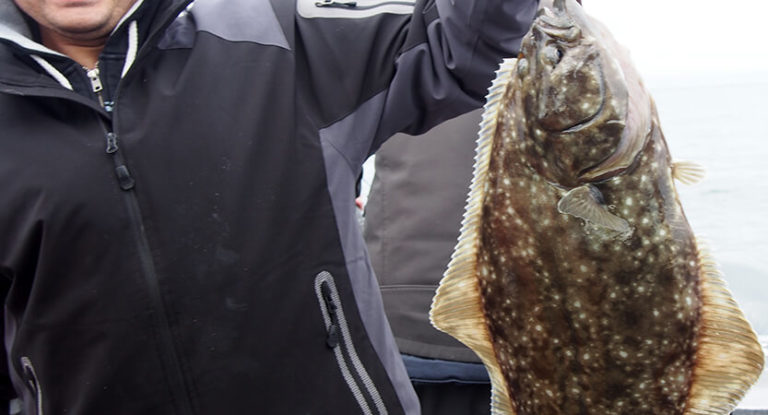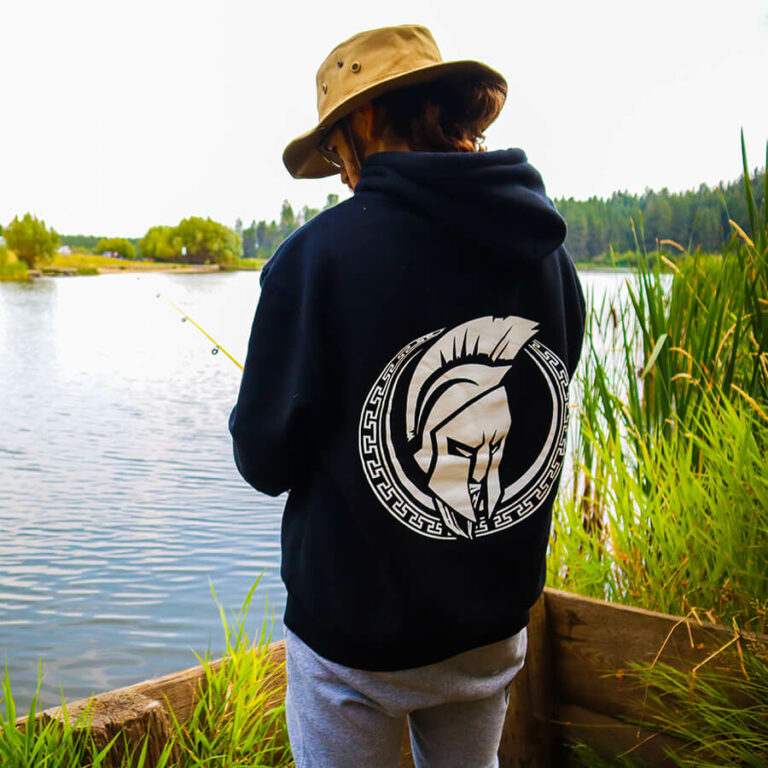Common piranha is a predatory fish from the extensive haracin-piranha family. It is difficult enough to find a person who does not know about the existence of this fish. From early childhood, from various sources we are told about the bloodthirstiness of piranha. The reputation of this species is really such that it is not always clear where, however, and where is fiction. It is worth noting that not all fish of this family should be considered dangerous. For example, metinnis (Metynnis) or fish of the genera tambaqui (Colossoma) and luna (Myleus), the basis of which are various plant species. As for predators, they are also represented by several genera, including the most famous species – common piranha (Pygocentrus nattereri).
Here is an overview of the content of this tutorial, feel free to jump to any section you care about:
For more fishing instructions, take a look at these popular Trizily links: Haddock Fishing, Bass Fishing.
- The 7 best underwater fishing cameras 2022
- The 7 best fishing sunglasses 2022
- The 9 best fishing lines 2022
- The 7 best spinning reels 2022
Piranha Fishing
Overview of piranha
This is a relatively small fish, the length of which is usually 15-20 cm. But the maximum size can reach 50 cm and weight up to 4 kg. In general, among other types of piranhas, individuals more than 1 m in length are found. The body of the fish has a rounded shape strongly flattened laterally. For piranha vulgaris, the coloration of the upper body is dark olive, and the sides are silver. The whole body is covered with small scales.
At a young age, the fish are brightly colored, in adulthood, they become darker. In general, this feature is characteristic of all major species. There are two fins on the back, the back is small and shifted to the caudal. All fish in the family have fleshy lips, which are often damaged during hunting and internecine fights.
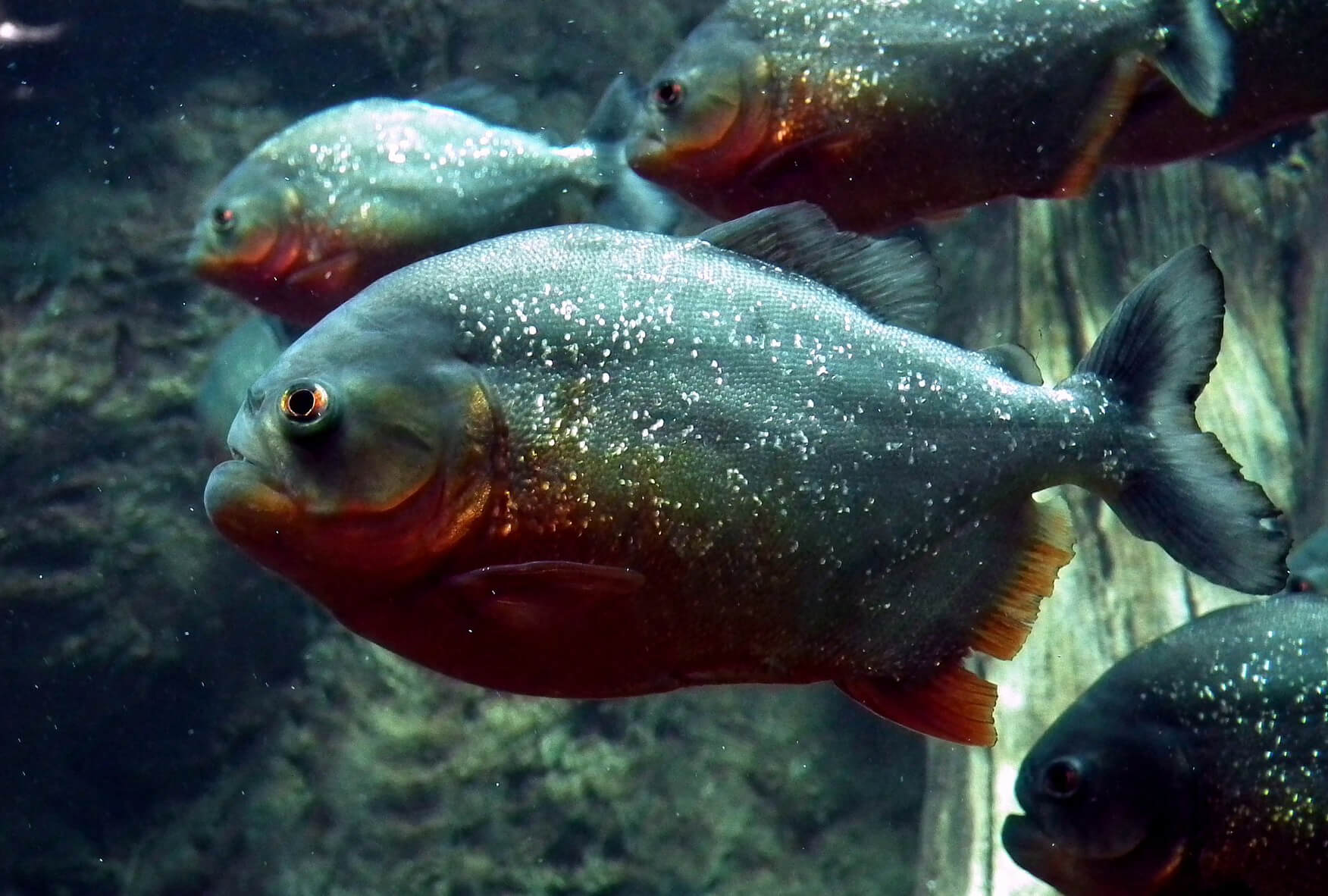
There are a large number of wedge-shaped teeth on the jaws. The lower jaw is moved forward, which gives even greater ferocity to the appearance. The length of the largest teeth of the lower jaw can reach 2 cm. The force of compression of the jaws is equivalent to 320 Newtons. Populations of piranhas are numerous and inhabit various sections of the river. Form large flocks.
Characteristics of piranha
They are active predators, counting on the swiftness of attack and surprise. In a group, they attack victims of any size. In search of victims, they count on a very sensitive sense of smell, vision and a lateral line. In a flock of other fish, patients and wounded are quickly identified, in addition, individuals who give in to panic are instantly identified, which also becomes a signal for an attack. It is worth noting that piranhas can form a symbiosis with some other species of fish that clear them of parasites, and they do not hunt them.
Piranha does not attack its wounded relatives. Damage to the body of piranhas quickly heal. Real cases of killing people are not known. Some species of piranhas specialize in feeding the scales of other fish or nibbling the fins of larger species. Many conditionally plant-eating species can, however, feed on the young of other fish. Others specialize in the fruits of near-water plants. Predators will never miss the various representatives of invertebrates, mollusks and more.
Reproduction habit of piranha
The spawning behavior of piranhas is quite diverse. Different species spawn at different times. It is known that piranhas are characterized by long pre-spawning games, where pairs are formed. The males prepare the place for spawning and fiercely guard the masonry. Piranha females are highly productive: they lay several thousand eggs. The incubation period depends on the local temperature conditions of the reservoir.
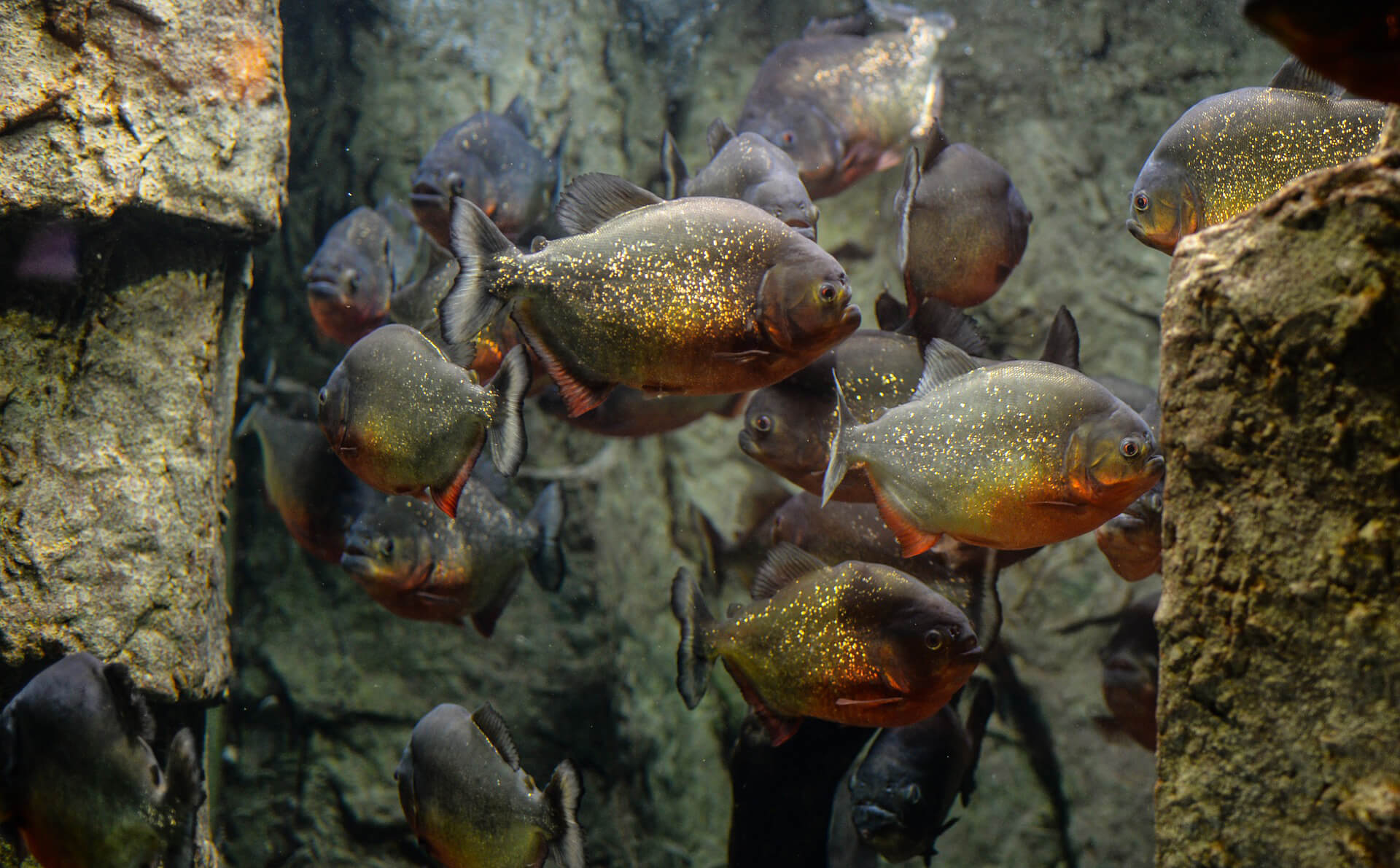
Piranha fishing guide: Techniques, bait and gear
Piranha fishing techniques
Due to the large number of species, aggressiveness and gluttony, they are a frequent and typical object of fishing on the rivers of the tropical zone of the rivers of South America. Catching piranhas on natural lures does not require special gear, knowledge and skills. Many saw footage of locals catching piranhas without fishing rods and hooks, using scraps from parts of the carcass of animals or fish. From greed, piranhas bite their teeth into the flesh, and remain hanging on it, it is only necessary to lift it and throw it ashore.
Fish meat is quite tasty and is actively used for food. When fishing on various baits with the help of amateur tackle, it is necessary to use strong leashes, possibly ordinary metal wire. Leashes are needed, even when catching herbivorous piranhas. Most fishermen who come to the tropical rivers of America try to catch a variety of fish species. And, as a rule, the ubiquitous piranhas become a “problem”: due to frequent bites, they prevent us from focusing on the selected representative of the ichthyofauna. The most popular ways of fishing for piranhas can be considered fishing for various gear using natural baits. The second most popular way of amateur fishing is spinning.
Spinning for piranha
As already mentioned, catching piranhas on a spinning rod is most often associated with catching them like by-catch. If you want to purposefully fish piranhas, then the most important moment of equipment is its strength. First of all, these are leashes and hooks. As already mentioned, the most reliable leash can be a piece of metal wire. The reason is clear – a large number of sharp conical teeth that can destroy any bones.
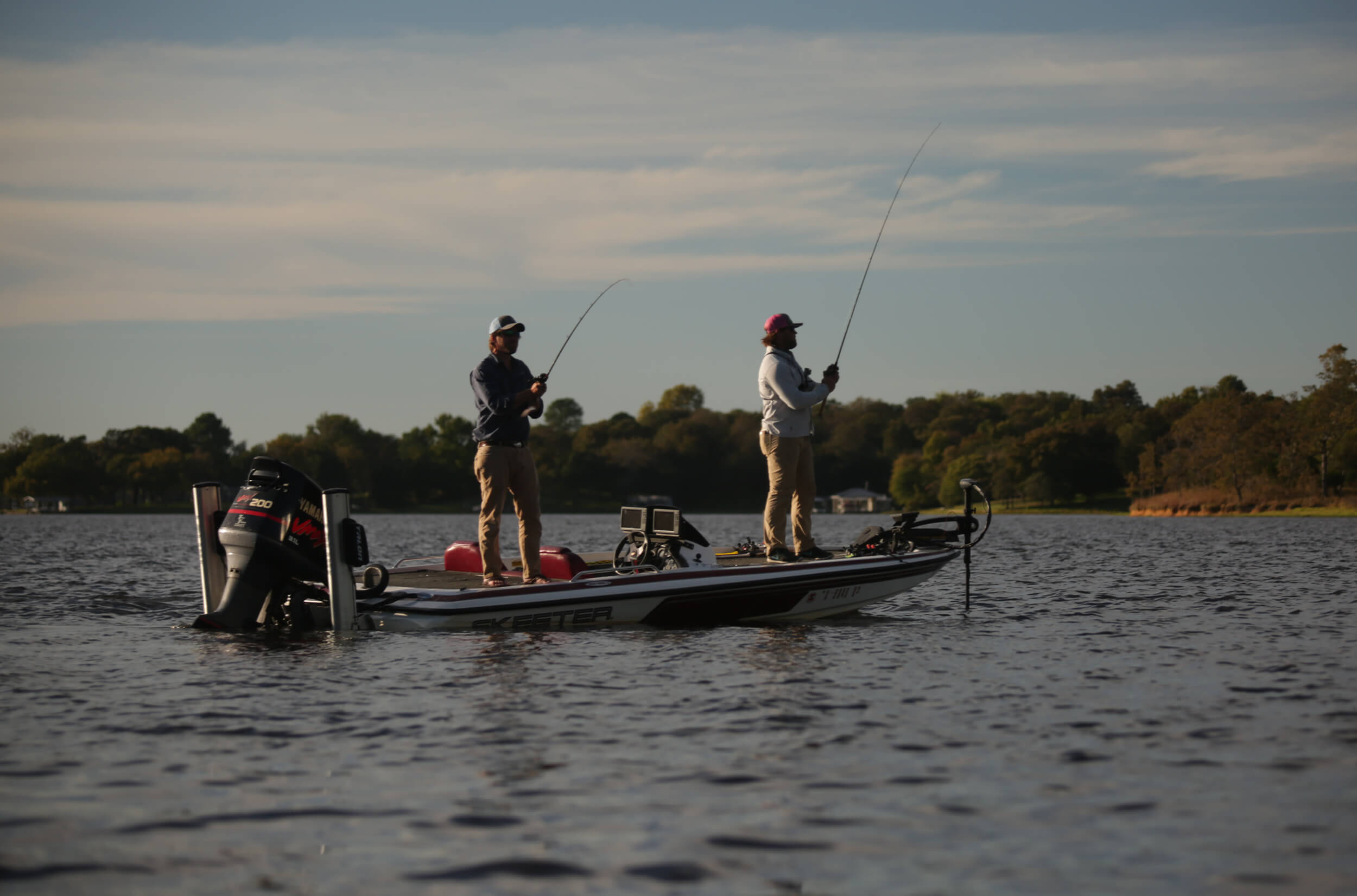
Otherwise, the approaches in choosing lures and tackle itself are rather related to the personal experience of the angler and his predilections. Given the fact that the main types of piranhas are relatively small fish, then with specialized fishing you can use spinning gear of lighter classes. But do not forget that a wide variety of fish, in tropical rivers, is the reason for unexpected bites, where instead of a small piranha it can peck a catfish, weighing several kilograms.
Piranha fishing bait
The main nozzle for catching predatory piranhas are natural baits of animal origin. In the case of fishing on artificial baits, the choice should be based on the principle of maximum strength. Or, fishing can turn into “endless replacements” of attachments. To catch non-predatory species, local residents often use the fruits of plants, which can specialize in fish.
Where to catch piranha
It is worth noting that the piranha family has at least 40 representatives, and probably there are still undescribed species. The distribution range covers large areas of tropical rivers and lakes in South America: Venezuela, Brazil, Bolivia, Argentina, Colombia, Ecuador and other countries. In rivers, it adheres to various places, but rarely lives on gallows. Flocks are actively moving along the pond.

